Improving Posture: Exercises to Correct Excessive Low Back Curve

Improve Your Posture: How to Correct an Excessive Lower Back Curve
Are you aiming to improve your posture? Correcting an exaggerated curve in your lower back is achievable with targeted exercises.
Experiencing lower back pain? This discomfort often stems from an abnormal arch in your spine, known as a larger-than-normal lordotic curve.
This guide unveils essential exercises designed to rectify an increased curve in your lower back posture. After mastering the foundational routines, you’ll find advanced exercises to further enhance your posture.
See Also: Advanced Posture Exercises For Your Rounde Upper Back
Understanding Posture: Addressing Hyperlordosis
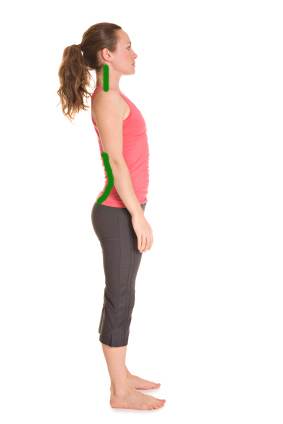
The natural curves in your lower back and neck, known as lordosis, play a crucial role in your overall posture. Normal lordosis is common and healthy.
However, the internet is rife with misinformation regarding posture correction. As a practising chiropractor, my goal is to provide you with accurate and reliable information to navigate posture improvements effectively.
Excessive curvature, or hyperlordosis, refers to an overpronounced curve in the lower back. “Hyper” indicates an excess, much like the term “hyperactive.” Conversely, “hypo” denotes a deficiency, indicating less curvature than normal.
It’s possible to exhibit hyperlordotic posture without experiencing pain. Nevertheless, addressing this condition early is vital to reduce the risk of developing osteoarthritis in the joints and discs of your lower spine.
See Also: 4 Upper Back Exercises To Improve Posture
Correcting Hyperlordosis: Enhancing Appearance and Reducing Risk
Proactively adjusting a hyperlordotic posture not only mitigates health risks but can also refine your silhouette. Through specific exercises, we can realign your pelvis, diminishing the appearance of lordosis without altering your body’s natural shape.
Causes of Hyperlordosis Include:
Tight Muscles:
- Erector spinae muscles along the spine.
- The hip flexor muscle is known as the psoas.
Weak Muscles:
- The gluteus maximus shapes your buttocks.
- Abdominal muscles, particularly the rectus abdominis or “six-pack” muscles, remain concealed for many under a layer of fat.
Hyperlordosis results from an imbalance between overly tight muscles pulling in one direction and weak muscles failing to compensate, exacerbating the spinal curve.
Correcting Your Posture: Balancing Muscle Strength
To amend your posture, begin by stretching the tight muscles before strengthening the weaker ones. This balanced approach is key to correcting an excessive lower back curve and improving your overall posture.
A: Arch Your Lower Back Like The Cat Pose in Yoga – Stretch your low back erector spinae (low back muscles).
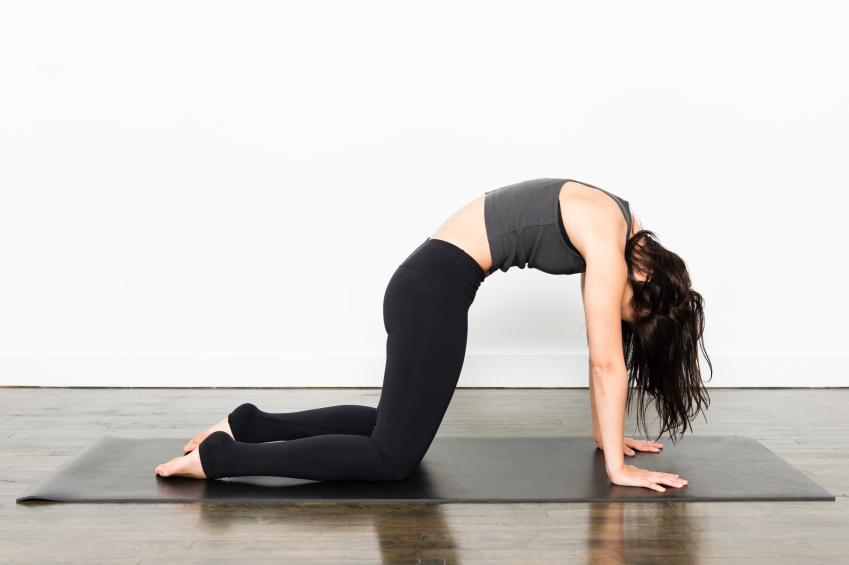
- Get on all fours with your hands under your shoulders, your knees under your hips.
- Arch your upper back and lower back like a cat does when it’s scared.
- Hold for 30 seconds – do 3 sets.
- If you have a disc problem, or it hurts to arch and flex your back, this exercise is not for you.
A: Child Pose: Second stretch for your low back erector spinae (low back muscles).
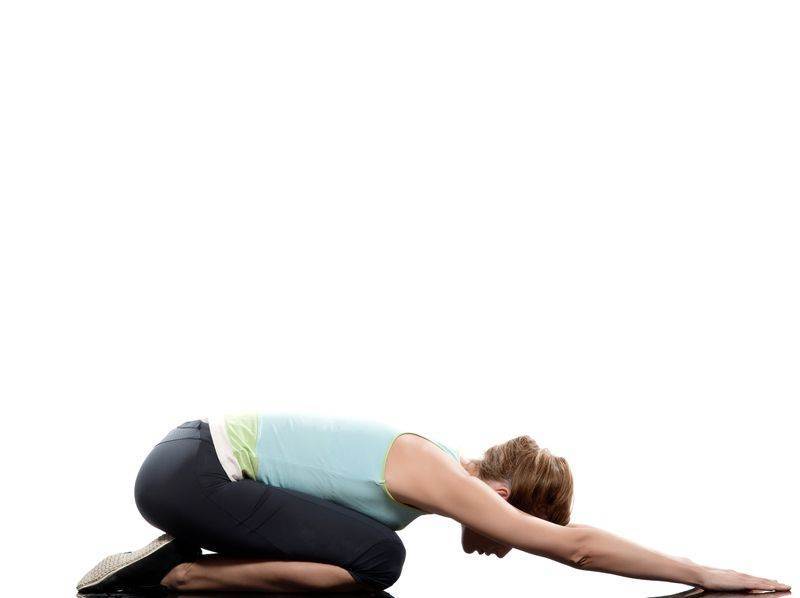
- Get on your hands and knees.
- Sit back onto your heels with your arms reaching out as far as they will go.
- Your head is looking down – neck down.
- Hold for 30 seconds – do 3 sets.
A: Lunge Pose: You need to stretch the hip flexor muscles (psoas muscles)
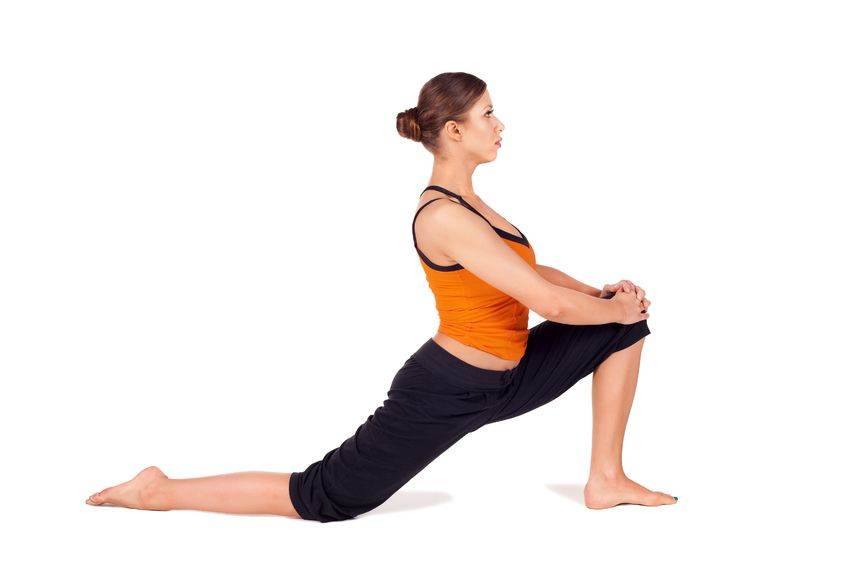
- Get down on your knees.
- Put one leg forward with the knee bent to 90 degrees.
- The other leg is back with the knee very slightly bent resting on the floor.
- You should feel the stretch in the front part of your hip.
- Hold for 30 seconds and do 3 sets.
Second, strengthen your gluteus maximus (your butt-shaping muscle) and abs (your rectus abdominis muscles or six-pack muscles)
I will give you two exercises to strengthen your gluteus maximus. The squat and the single-leg squat.
B: The Chair Squat To Strengthen Your Gluteus Maximus
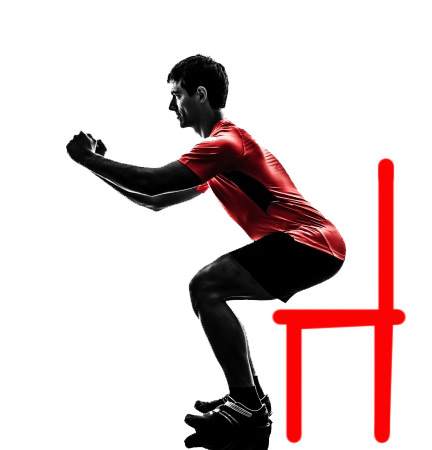
- Stand with your back to the chair.
- Your feet should be shoulder width apart with your feet turned out slightly
- Make sure to not arch your lower back when lowering yourself down to the chair.
- Touch the chair and come right back up 10 – do 3 sets.
B: Single Leg Squat To Improve Your Posture. When you can do three sets of chair squats easily, try single-leg squats.
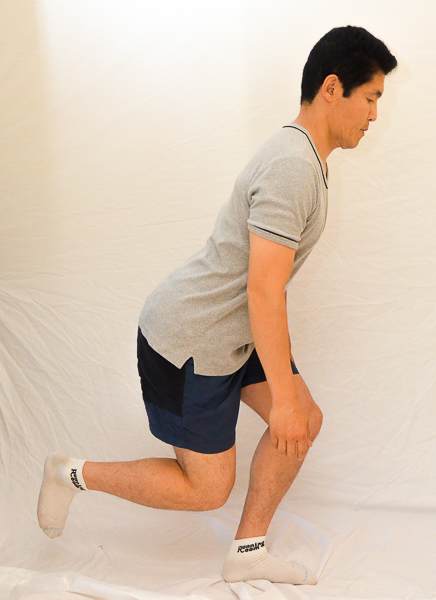
- Always stand near a wall so, you can support yourself if you lose your balance.
- Stand on one leg.
- Stick out your butt as much as you can while bringing your other leg back, dragging it on the floor to keep balance.
- Go as far as you can with the back leg.
- Don’t let your knee go forward past the big toe
- Do 3 sets of 10.
Strengthen Your Abs To Help Your Posture
B: Front Planks strengthen your abs without putting dangerous pressure on your discs like crunches and sit-ups do.
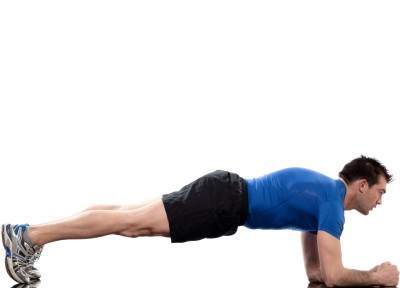
- Lie face down.
- Toes together and your arms shoulder width apart.
- Hold this position without raising your butt too high
- Your body should form a straight line. Look in the mirror.
- Hold for up to 1 minute at a time. – do the exercise 3 times.
B: Advanced Abs Strengthening To Help Your Posture

- Get a basketball or medicine ball.
- Get in the front plank position.
- Balance with your forearms on your medicine ball/basketball.
- Pull your arms in toward you while balancing on the ball.
Feel free to share your questions, thoughts and experiences in the comments below, and don’t forget to connect with us on Facebook for more updates and tips on improving your shoulder health. We’d love to hear your opinions on who you consider the best Toronto chiropractor.
Related Categories: Back Pain, Hip, Posture, Shoulder


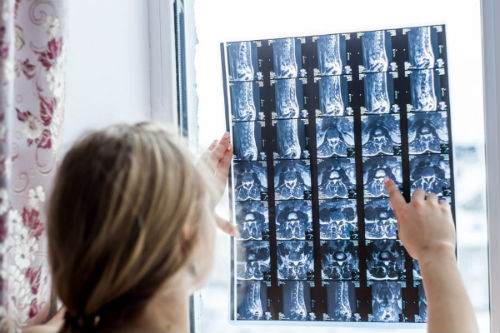

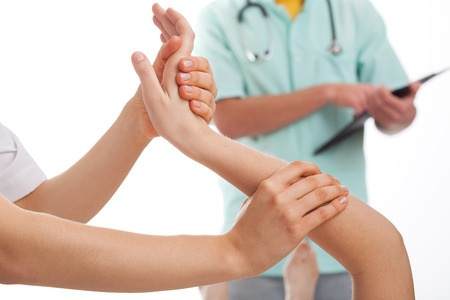

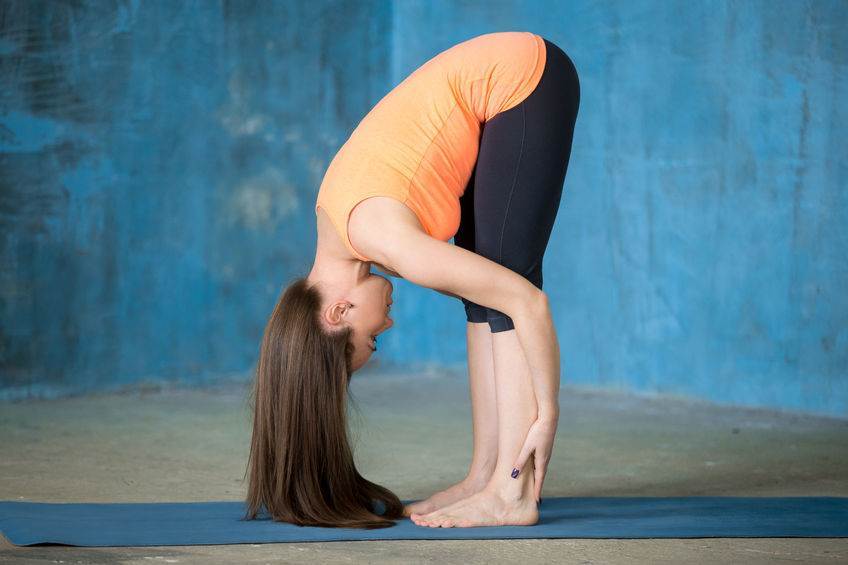
Hi Dr.
I’m having some problem well related to this. I have tenderness in the entire upper curve of my left glut (off and on for 3 years now). I stretch my hipflexors enough. After some research I noticed a lot of talk about over arched lower backs and how it relates to sciatica and back pain. The soreness becomes a lot more accented after I work out. I have noticed that the only way to not feel pain during and after a work out is to basically force the curve in my lower back to become straight by contracting what feels like the upper two abs of what would be the six pack. I have been doing this pretty much constantly for 3 days now. it is helping a lot but is a bit uncomfortable. I do this when I work out as well, when I do squats and other moves I notice new muscles working as compared to what I felt before(Almost like I had been cheating in my form all these years.) My question is: Is it ok to do this? or might it lead to other imbalances later? The pain goes away if I stop working out, but that isn’t an option I want to consider just yet. I want to continue to workout and make this dull annoying pain go away.
Author
Thanks for your question Will. I like the detail you put in the question. I can give you a better answer as you put much more detail and thought into your question and describe what makes you better. You can do knee to chest exercises 10 times in one set. You should try 6 to 8 sets a day. However, if you have a disc herniation that is going out backwards you will get worse.
Hope that helps your pain and your posture. The above is an opinion and not a recommendation.
Hello Dr Ken
I have hyperlordosis where my stomach protrudes scoliosis curving to the right mild lateral steniosis and merelgia parathesia in both legs and disc problems L2 to l4 is there any combined exercises I can do for these as I had a total hysterectomy 2 years ago and am trying to exercise by swimming yoga and exercise bike to get my core strength back also
Kind regards
Michelle
Author
Thanks for your question Michelle. You should try these exercises in this article Michelle.
Hope that helps your posture.
Many thanks for your reply
Author
You are welcome, Michelle.
Dr Ken,
Just 2 days into exercising this already made a huge difference in my sleeping posture, resulting in much less pain in the morning. Thank you so much for sharing your expert knowledge here. God bless you.
Author
You are welcome, Daniel. Glad you found the exercises helpful.
hello how long will it take for me to notice a difference?
Author
Thanks for your question Sam. It depends on….
1. If you do the exercises correctly. Do them incorrectly and they won’t help.
2. How often you do the exercises. Not enough and they won’t help.
3. How persistent you do the exercises. eg. do them for a week will and the exercises won’t do anything.
4. Doing other exercises that you think help or you read about might counteract the exercises here.
So the answer is, it depends on the above. If you do everything right it can take a few months to a year. The above is an opinion and not a recommendation.
If you any more questions for this downtown Toronto chiropractor I will do my best to help.
I’m 14 years old, and I have excessive lordosis. Will this fix itself as I grow?
Author
Thanks for your question Jacob. So you are asking if you do nothing, will your posture become better or even become “ideal”. First, you should go to your doctor to determine if you have excessive lordosis. If that is the case then you should do the exercises as experience tells me hyperlordosis doesn’t fix itself.
Hope that helps. This is an opinion and not a recommendation.
Well, I asked because I read that it fixes itself (except in adults) through growing.
Do you know if this is true, Dr Nakamura
Author
Haven’t seen any cases where that has happened personally.
Hello Dr. Nakamura
I have Lumbar Lordosis and I’m a 16 year old girl. What can help me ? Some specific exercises or diets ? Please, thank you so much.
Author
Thanks for your question Jasmine. Why don’t you try doing the exercises in this article? This is an opinion and not a recommendation.
Hope that helps your posture.
This article has helped a lot. Really promising workouts.
Given all these exercises what would be the proper diet doctor?
Thank you!
Author
Thanks for your question Ronnie. Lots of fruit and vegetables, brown rice, and your daily protein. You don’t need too many carbs.
Hope that helps posture. This is an opinion and not a recommendation.
What a fabulous article . Thank you for sharing this. Can you please provide me some advice for my son who is age 9 and has slightly bandied legs which means he tends to trip and is has trouble with certain sports requiring balance and nimble movement. It is not serious enough for surgery but can you suggest some exercises he could do. We have started skipping to help.
Thank you
Author
Try balancing on one leg first with a chair in front just in case. If he can do that easily bring the leg forward and backwards, keep the chair in front. Move onto moving the leg sideways while balancing on the other leg. Next, hold a one pound weight in one hand while balancing on one leg. Bring the weight forward and backwards. Move on to side motions and eventually moving the weight around the body in a circle while balancing on one leg.
The above is an opinion and not a recommendation. Hope that helps your son’s posture. If you have any more questions for this downtown chiropractor in Toronto I will do my best to give you a good answer.
Thank you so much for your time and input! I will start the exercises and believe for relief. You are a true blessing to many who are searching for help and answers.
Author
You are welcome Marian.
Hello Dr. Ken: I have been told by 2 massage therapists that I have hyperlordosis and one said also kyphosis.
I used to sit and sleep in a chair that obviously did not have great support as I would slump down into it a lot.
Well, I ended up with something that feels like it is sticking out and pressing in to other chairs or sofas that I sit on. This is in the center spine area at my waistline or slightly above. If I place my hand behind my back right above that area it alleviates the pressing feeling. Any thoughts or input appreciated.
Author
Thanks for your question Marian. After 2 massage therapist gave you the opinion that you have hyperlordosis it is more likely †hat you have it and hyperkyphosis also goes along with hyperlordosis. Kyphosis is simply the normal curve usually referring to the mid back. Sometimes it is used to refer to the lower back with no curve or a neck with no curve or a reverse curve.
Don’t blame yourself. Most times it’s hereditary with your postural habits making thing worse. If bad posture alone caused this, the vast majority of people would have problems.
I would just do the exercises here assuming that the massage therapists are correct and you are feeling pain. Really there is no need to correct anything if there is just a visual “problem”. I assume you have some pain, soreness or stiffness as you say that things are alleviated when you press above the area.
The above is an opinion and not a recommendation. Hope that helps your posture. If you have any more questions for this Toronto Downtown chiropractor I will do my very best to give you a good answer.
Hello dr. I’m a 31 year old female. I have very obvious hyperlordosis and *I think* an upper rounded back. My back is beginning to really give me problems, as every day I wake up in the morning with back pain. I also have a very stiff neck, and my shoulder blades stick out somewhat. Going to a chiropractor for adjustments helps for about a week, then the pain is back. Any help would be very appreciated.
Author
Thanks for your question Rosie. I would start by doing the exercises here in this article. You need to do them for a few months before you start to feel a difference. If you want a faster response perhaps another chiropractor would be helpful. The above is an opinion and not a recommendation. Hope that helps your posture.
If you have any more questions I would be happy to do my best to give you a good answer.
Thanks for the fast reply! Just one more question…. How often do you recommend I do the excerices and stretches?
Author
Everyday Rosie. At least 5 days a week.
We have an 11 year old boy and a 9 year old girl. The boy always had normal back curvature. The girl has an overly curved lower back and her belly sticks out significantly. It has been that way since she was very little and we were advised it was normal in certain kids and will correct itself by the time she is 7 to 9 years old. Only, it hasn’t. It actually seemed to have gotten worse. She does not feel any pain in the back, stomach, or anywhere. What should we do? Thanks in advance for your reply.
Author
Thanks for your question Emily. If you are this concerned you should go to your medical doctor to have an X-ray. Having said that X-rays are usually not recommended for young kids unless absolutely necessary. I don’t think it’s medically necessary but it sounds like you an abundance of fear. Have you done any of the tests in this article? If not read the article.
Hope that helps your daughter’s posture.
O stood against the wall as suggested in your arrival. My heels, calves hip and shoulder blades touch. But my head is a long way from the wall I am ashamed to say. My lower back has a massive duo. I will follow your exercises and hope for the best. I can’t get my head near the wall because my shoulder blades protrude so much. Thank you for this article
Author
You are welcome, Deanne. Sounds like it will take a while before you see results so be positive and persevere.
Hallo Dr.
I am a 26 years old male having about169/170 cm hight.recently I found out that Im having lumbar curve and upper spaine curve as wel. And my stomach muscle not at all strong.I am planning to buy some hgh to increase height.is it helps? I read that if I fix my back curve it can b add 1.5 to 2 inch of height is it true? Please guide me
Regards sir.
Author
Thanks for your question Akhil. I didn’t realise that so many people have issues with their height. Almost every single person has curves in the lower back and upper back. If you don’t it’s a problem. I think you mean you have too much of a curve.
HGH is human growth hormone. First, you cannot grow taller with HGH as your growth plates have fused. Your bones will get thicker but not taller. You can even get some bony deformities. That’s my opinion and not a recommendation.
Hope that helps your posture that natural way. The only way to apparently be taller is through exercise.
Sir i am suffering from anterior pelvic tilt ,,please help me to correct this ,,and what exercises and stretches i have to avoid. Please tell sir
Author
Thanks for your question Guarav. You need to avoid the exercises that put you in that position such as cobra, sphinx, wheel or about half of yoga postures. I cannot list them all, as long as you understand the idea you will know what to avoid.
Hope that helps your posture.
Hello Dr. Nakamura
I am only 18 and have hyperlordosis, and I think it’s pretty severe. I also have kyphosis (the way my thoracic part of the spine compensates with the lumbar lordosis) so it looks really funky. My head is forward from my neck and on the bottom of my neck I can feel one of my cervic vertebrae is very prominent. I have this since I was in elementary school, I have been to a doctor and did quite a lot of excercises that the physical therapist recommended, but they never seemed to work (I recall they included a lot of laying down on my abdomen and stretching out my arms/torso). So I gave up after the unsuccessful excercise journey and now I am getting very self concious about my physique, and I am also having trouble with lower back pain when I walk or stand for longer.
I also have noticed that I have anterior pelvic tilt and my legs are long and taut (they stretch out diagonally when I try to stand straight).
I read somewhere that stretches for my m. psoas major are not going to help since my legs are taut and they will only worsen my hyperlordosis.
Please give me an advice of help me!!
P.s. what do you think would be the best sleeping position? Mostly I sleep on my side, in a fetal position.
P.p.s I read somewhere that sleeping on the floor on my back would improve it, since the gravity will try to pull my abdomen down, lol.
What do you think, Dr Nakamura?
Author
Thanks for your question Luna. If you have severe hyperlordosis with hyperkyphosis (increased curvature of the mid back), due to Scheurmann’s disease the problem may not be correctable. There are lots of things written on the various websites by unqualified people. For example, thousands of websites have articles about too much curve in the lower back defined as lordosis. In fact, lordosis is normal to have in the lower back and neck. They are getting even the basic definition wrong.
If you don’t have Scheumann’s which can be confirmed by X-ray then the exercises will usually help. However, the older you are and the stiffer and degenerated your discs are the fewer effects the exercises will have.
1. Sleeping in the fetal position for the lower back is fine but will accentuate your mid back curve. Better just to have your legs forward to decrease the curve in your lower back.
2. Sleeping on the back will usually be too sore or painful as your back is trying to hold that arched position and will make your problem worse. You can even try just to be sure if you don’t believe me. If you had mild hyperlordosis, that is the only time it may help. Certainly not when it is severe. Keep in mind your “severe” maybe what I consider mild so you can only know for sure by trying.
This is an opinion and not a recommendation. If you have any more questions regarding posture for this downtown Toronto Chiropractor I will do my best to give you a helpful answer.
Hope that helps your posture.
Thank you so much Dr Nakamura, I really appreciate it.
Is there any way I could send you some pictures, maybe on email? I really need all the help I can get.
Author
Sorry I can’t help you there.
Thank you for your post. I’m 63 and have a sever case of hollow back and very round upper back. My mother was the same and was in constant pain before she passed away. Will these exercises help me or am I to old?
Author
Great question Kathy. The exercises will help but it will certainly take more time as the spine is generally stiffer when you are older.
Hope that helps your posture.
I am the opposite I have little to no curve in my lower back causing painfull issues how can I get the correct curvature back? Thankyou
Author
You should try these exercises. https://www.bodiempowerment.com/herniated-disc-part-2-the-best-exercises-for-your-herniated-disc/
This is an opinion and not a recommendation.
Hope that helps your posture.
sir,
i have l5 s1 nerve compression with disc dessication at l5.
i also have straightening of lumber spine seen(inward curve i can see in the mirror). so what exrecises are good for me ..please reply to correct my lordosis curve .
Author
You should do the cobra exercises.https://www.bodiempowerment.com/herniated-disc-part-2-the-best-exercises-for-your-herniated-disc/
That’s my opinion and not a recommendation. Others will give you a different opinion. Remember that like any exercise they can give you pain. You should have them supervised by a health practitioner like a chiropractor or a physiotherapist that knows the exercises. Most medical doctors do not know the exercises. At the least the ones I’ve met in Canada the US and the UK.
Hope that helps your posture.
Greetings Dr., Iam 43 years old,have lower back pain which I just ingnored, 3 weeks back while brushing I bent forward which caused sudden pain in the back and not ablexciser or stand completely without support I went to Doctor he gave medicine and advice me to take rest for 3 to 4 weeks, MRI reports says :-
1. Lambarisation of s1 vertebrae
2. Diffuse bulge with posterior left paracentral protrusion of the L4-L5 intervertebral disc causing mild thecal sac compression
3. Diffuse bulge of the L5-S1 intervertebral disc with associated liagmentum flavum thickening, causing thecal sac incidenation with bilateral mild foraminal narrowing.
4 No significant primary canal stenosis seen
Kindly advive in what needs to be done , best positions,postures and excises to become normally and can I go back to work?when? which involves sitting 7-8 hours in front of the computer .THANK YOU
Author
Thanks for your question Veena. https://www.bodiempowerment.com/herniated-disc-part-2-the-best-exercises-for-your-herniated-disc/
I would try these exercises. Hope this helps your disc herniation. Remember with any exercise you can get worse so I advise you to get help from someone that knows the exercises. That excludes most medical doctors but includes chiropractors, physiotherapists and some osteopaths.
This is an opinion and not a recommendation.
I workout almost everyday and I got the abs and things like that but I have a curve in my back and thanks to these stretches I can feel the muscles getting stronger in my back thank you.
Author
You are welcome Joey.
If you have any more questions for this Toronto downtown chiropractor I will do my best to give you a useful answer.